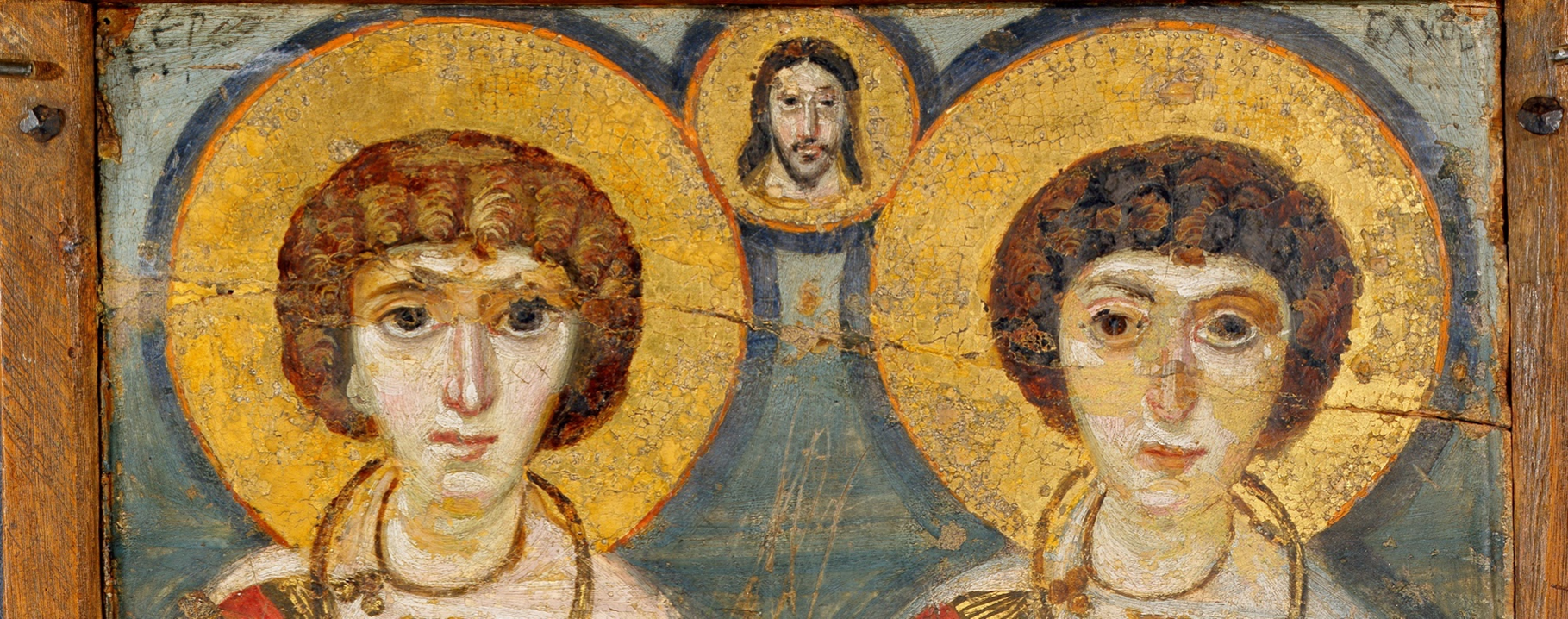STANDING WITH UKRAINIAN MUSEUMS
The war that Ukraine has been enduring since 24 February 2022 continues to represent a serious threat for the museums and heritage of this country, with its millennia-old history, whose treasures are at greater risk than ever.
Through its action, the Musée du Louvre is seeking to contribute to the protection of Ukrainian cultural objects and the fight against their illicit trafficking. To respond to this pressing need, since December 2022, Louvre staff have been collaborating with their counterparts at the Bohdan and Varvara Khanenko National Museum of Arts in Kyiv, to facilitate the transfer of sixteen of the most emblematic works from the Ukrainian national collections to France, in the utmost secrecy.
This operation, unprecedented in character and scope, demonstrates France’s unwavering support for Ukrainian culture professionals, who demonstrate extraordinary energy and creativity on a daily basis in coping with the consequences of the war. It was devised in partnership with the International Alliance for the Protection of Heritage in Conflict Areas (ALIPH), which has been fully committed to the protection of Ukrainian heritage since the start of the war.
The exhibition ‘The Origins of the Sacred Image: Icons from the Bohdan and Varvara Khanenko National Museum of Arts in Kyiv’, is presenting five of the sixteen works transferred to France: four icons from the 6th and 7th century, encaustic paintings on wood from Saint Catherine’s Monastery at Sinai, and one micro-mosaic icon from the late 13th or early 14th century from Constantinople, with a remarkable gold frame.
This set of five icons illustrates both the classical heritage at the foundation of Byzantine civilisation, and the highly original relationship to images that it introduced, which characterised artistic expression within Eastern Christianity. It forcefully announces the themes of the Department of Byzantine and Eastern Christian Art recently created at the Musée du Louvre.
These masterpieces of sacred art have yet to reveal all their mysteries, and will subsequently be subject to in-depth analysis and study. An international committee composed of Ukrainian scientists and international specialists in the field will accompany this highly anticipated research.
Heralding the opening of the new department in 2027, this exhibition is both a vibrant manifesto of the force of images in Byzantine art, and an emphatic tribute to the richness of Ukraine’s national collections, and the professionalism of our colleagues who are courageously endeavouring to protect this universal heritage.
THE BODHAN AND VARVARA KHANENKO NATIONAL MUSEUM OF ARTS, KYIV
The Bohdan and Varvara Khanenko National Museum of Arts in Kyiv is the most important Ukrainian institution dedicated to universal art history. It encompasses some 25,000 works of ancient art, Byzantine, European and Asian art. The museum’s collection owes its origin to the Ukrainian entrepreneurs, art lovers and philanthropists, Bohdan and Varvara Khanenko. The couple made their first acquisitions during their 1874 honeymoon in Italy. From the beginning, their wish was to build an eclectic collection for themselves, with the ultimate aim of allowing the collection to be seen by as many people as possible.
The origins of the museum: Bohdan and Varvara Khanenko, a couple well-versed in art
Over more than four decades, Bohdan and Varvara Khanenko travelled extensively to enrich their collection: in Europe (Paris, Warsaw, Vienna, Berlin, Rome, Madrid), China (Harbin) and likely Egypt (Cairo). They acquired works by artists such as Élisabeth Vigée-LeBrun, Jean-Baptiste Carpeaux, Juan de Zurbarán, Jacopo del Sellaio, Jacob Jordaens and Paul Rubens. During one of their trips, they also acquired the Byzantine micromosaic icon depicting Saint Nicholas, dating from the late 13th century, on display in this exhibition.
The Khanenkos provided substantial support for the development of Ukrainian craftsmanship, collected icons and funded archaeological research throughout the country. The 3,145 archaeological objects in their collection formed the foundation of the Kyiv Industrial Arts and Science Museum (now the National Art Museum of Ukraine). Bohdan Khanenko contributed financially and took part in its establishment in 1899. The couple promoted the development of the Ukrainian museum network, contributing to the creation of five national museums standing today.
The majority of their collection, however, remained in their family manor in the city centre. Upon Bohdan Khanenko’s death in 1917, the collection and home were donated to the city of Kyiv. His widow requested the patronage of the Ukrainian Academy of Sciences, which bestowed upon the new museum its function as a centre for art history research. Its first curators published in French and other European languages, and nurtured close ties with international colleagues.
With the rise of the Soviet regime, the memory of the Khanenkos was erased from the museum’s name. The collectors were considered to have failed to contribute to proletarian culture. The institution reclaimed the names of the founders following the re-establishment of Ukrainian independence in 1991.
The acquisition of the four icons of Mount Sinai
Since its establishment, the museum has endured substantial losses. However, several noteworthy pieces have also been added to the collections. These include the four remarkable icons being shown at the Musée du Louvre, which were transferred to the museum in 1941 from the collection of the Anti-Religious Museum. The latter was created by the Soviet government from the collections of several institutions, including that of the former Kyiv Theological Academy. In 1885, the icons had been left to the Academy by the prior of Saint Michael’s Cathedral, the Archimandrite Porphyrius Uspenksy, who had obtained them during one of his expeditions to Mount Sinai.
Today
Having survived two wars in the 20th century, the Khanenko Museum is now enduring its third armed conflict. At the start of the Russian invasion, its collections were hidden and the building is currently empty. In October 2022, the historical building and its interiors were damaged by a missile strike forty metres from its walls.
Thanks to the steadfast efforts of the team and substantial support from within and outside the country, the museum is continuing to play its role as a cultural centre, and is maintaining ongoing dialogue with its audiences.

